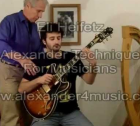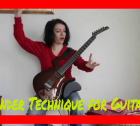Benefits and Research
The Alexander Technique attracts individuals wanting to improve mobility, ease postural discomfort, reduce chronic pain, and manage stress, while others seek lessons to advance their skills in the performing arts and athletic endeavours. Browse the menu lists below to learn more about how Alexander Technique can benefit you.
Use of resources
Please note that the content within the Research & Resources and Videos sections is provided only for general information purposes.
Use of Resources
Please note that the content within the Research & Resources is provided only for general information purposes. Many of the resources, such as books, are not free. Links to other websites or platforms are provided for viewers’ convenience, but ATC does not control or monitor them and accordingly cannot endorse their information or guarantee its accuracy and relevance. The use of content or links to third-party websites is at the viewers’ own risk. Viewers should contact an ATC-certified Alexander Technique teacher with any questions about the application of Alexander Technique to their specific issues.
Guitar
- Benefits
- Resources
- Videos
- Testimonials
Alexander Technique can fundamentally change the relationship of the guitarist to her instrument. Guitarists learn that their habits, conscious or unconscious, impact their studying and performance of the guitar. With the assistance of an Alexander Technique teacher, they understand that habits are corrected through changes in their thinking.
Guitar is such a popular instrument but there are so many ways to misuse the body when playing it, regardless of whether the style is rock, blues, jazz, heavy metal, or classical. Guitarists can develop poor posture as they look down at their instruments. They tend to drop their head and neck and round their body toward the guitar to see their fingers on the fretboard.
As Guido Heistek observes, “the urge to keep close track visually of what our fingers are doing comes out of a very sincere desire not to make mistakes. Isn’t it ironic that relying too heavily on the visual would cut us off from some of the feedback that can help us play reliably? In a way, it’s like we treat our hands as if they actually aren’t our hands and we need to remote-control them like a puppeteer controlling a marionette.”
Guitarists often reach for notes inefficiently by bending and tightening the wrist, instead of leaving the wrist neutral and extending the fingers – they may not know they have the capacity for this type of movement. They also tend to use far more left hand finger pressure than is necessary, falsely believing that it is impossible to get a clear note without gripping intensely.
Guitarists can have a limited concept of the strumming hand movement. The right-hand thumb movement for guitarists should be conceived as having full motion from the wrist and forearm, instead of at the base of the thumb. If guitarists have a limited understanding of how the hand can work, they will limit the potential for its movement as well.
Guitarists can explore how to properly support the guitar in such a way that it offers a position of mechanical advantage. They can learn to improve their kinaesthetic awareness of their hand along the fretboard so that “seeing” their hands becomes both visual and kinaesthetic.
Often the Alexander Technique teacher will have the student first learn Alexandrian principles through simple everyday movements and activities before applying it to the guitar, where the stimulus to revert to old habits may be strong.
Correcting poor postural habits will lead to a sense of expansion and ease, which can prevent aches and pains or injuries. Instead of pulling the arm into the torso, the left arm is free to move up and down the fretboard faster without unnecessary muscular tension. When guitarists are not contracted and pulled into their instrument and have true control of it, their expressiveness can develop more richly and their awareness of the sounds produced by other musicians in an ensemble can become heightened.
There are no resources currently available.
Alexander Technique has given me more space to create and react in musical situations, as I am more aware of the mental state I am in when playing my instrument. This awareness helps me be present in performance, bringing choice and breath to moments that were previously determined solely through muscle memory.
– Mark Vasak, Guitarist and Alexander Technique Teacher
I started playing guitar when I was 7 years old. In the left picture below, I am about 16, playing on my Dad’s old classical guitar. About a year after this picture was taken, I started having all kinds of trouble. My hands got numb and cold when I played and I started to struggle with tendonitis and pain. This was really disturbing because I had plans to study guitar in university.
I received a lot of advice from teachers, doctors and physical therapists. I was encouraged to “sit up straight” and try and relax. But even though I tried my best to maintain what I thought was better posture it did not make the numbness and pain go away. I knew I was too tense when I played. I tried to relax, but as soon as I started playing it seemed impossible not to tighten up.
Finally, my doctor suggested that I stop playing for a while. In desperation I stopped playing for 6 months. My hand seemed to get better. On the doctor’s advice, when I returned to playing, I limited my time on the instrument dramatically: only 20 or 30 minutes a day. This was really tough because I was preparing for my university audition.
Somehow I managed to pass my audition and I made it into music school, where my hand problems persisted. I once had to drop out of a performance class mid-term. In the middle of my degree, I stopped playing guitar for six months! During that time, I did a lot of vocal work, but I often had problems with hoarseness. I finally made it through my program, but it was a struggle.
I remember after graduating university that a friend suggested I get into teaching guitar instead of performance. I thought that would be impossible because I couldn’t physically manage the time on the instrument.
When I started studying the Alexander Technique it really changed things for me. I got so much out of my lessons that I decided to become a teacher. I now teach Alexander Technique, guitar and ukulele for a living. I also have the opportunity to perform from time to time. I sometimes play my instrument for 4 or 5 hours in a day, which would have been impossible in the past. I still run into problems from time to time. But the Technique has given me so many tools that I am rarely in trouble for long.
I think the main thing I’ve learned in my study of the Alexander Technique is that the instrument is ME, not the guitar. I had lots of skill at playing the guitar but very little at managing myself in activity. I knew that I wanted to relax and be more upright but I had no idea about how to create the context in myself that would make it possible. This is one of the things the Alexander technique can teach us.
Another powerful effect of Alexander work is how it frees up artistic expression. I noticed this at the first workshops that I attended. When the teacher was working with a student there would be a subtle but profound change in the student’s voice and playing: a real clarity that is difficult to describe.
As a teacher I have enjoyed working with musicians and non-musicians. And, of course it’s particularly rewarding to work with guitar players! I sometimes take before and after pictures in lessons to show the students how different they look. I also make recordings so the students can hear the difference in their sound. They are often quite surprised! Some quite dramatic changes are possible in a short period of time with Alexander Technique work. However, it does take some work and commitment for students to learn to bring these changes about in themselves on a consistent basis.
It’s like learning to play an instrument. The instrument is you!


– Guido Heistek, Guitar, Ukulele, and Alexander Technique Teacher






